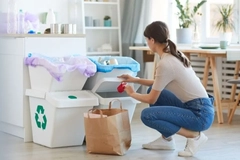Tipa introduces high-barrier compostable laminates for single-serve packs
Key takeaways
- Tipa expanded its portfolio with four new high-barrier compostable films and laminates designed for single-serve foods.
- The laminates provide oxygen and moisture barriers and are compatible with conventional machinery.
- Tipa positions the innovation as a scalable alternative to non-recyclable plastics, supporting circularity in flexible packaging.

Tipa Compostable Packaging has expanded its portfolio to include four new high-barrier film and laminate products. The laminates are said to extend Tipa’s mission to offer compostable alternatives without compromising on performance, barrier, or machine compatibility.
The products can be used for single-serve and sachet applications, chips and other salty snacks, protein and drink powders, nutraceuticals like vitamins and gummies, ground coffee and tea.
Daphna Nissenbaum, co-founder and CEO of Tipa, says: “With more than 40% of consumer goods packaged in flexible packaging and less than 1% of these recycled in the US, there is a need for more brands to choose sustainable options for their products.”
“Tipa’s new high-barrier solutions offer more products the ability to protect goods and maintain shelf life with the same durability and longevity achieved by conventional plastic, breaking the glass ceiling for compostable packaging solutions and allowing more brands to join the movement.”
Moving away from plastics
Tipa’s new laminates provide moisture and oxygen barrier properties, allowing various foods to use compostable packaging with no compromise on shelf life. The new high-barrier laminates include paper and transparent print layers giving brands multiple options to meet the functional and aesthetic needs of their products.
All of Tipa’s films and laminates are developed to be run on conventional packaging machinery and are printable and sealable.
According to Tipa, its compostable innovation performs at the same level as conventional packaging and eliminates the lasting impact of conventional plastics. Compostable alternatives to non-recyclable materials could reduce plastic packaging waste from the design phase, enhancing circularity for flexible and multi-layered packaging.
“Consumers enjoy the convenience of single-serve packets of everything from powdered drink mixes to their daily vitamins. Now that convenience does not have to create more waste and brands can continue to deliver the products their customers want while contributing to a sustainable future,” says Nissenbaum.
This year, Tipa and Presto Products launched home compostable zipper closures to markets in Europe and Asia-Pacific, following their debut in the US. The compostable closures could replace typically difficult-to-recycle packaging components, according to the companies.











